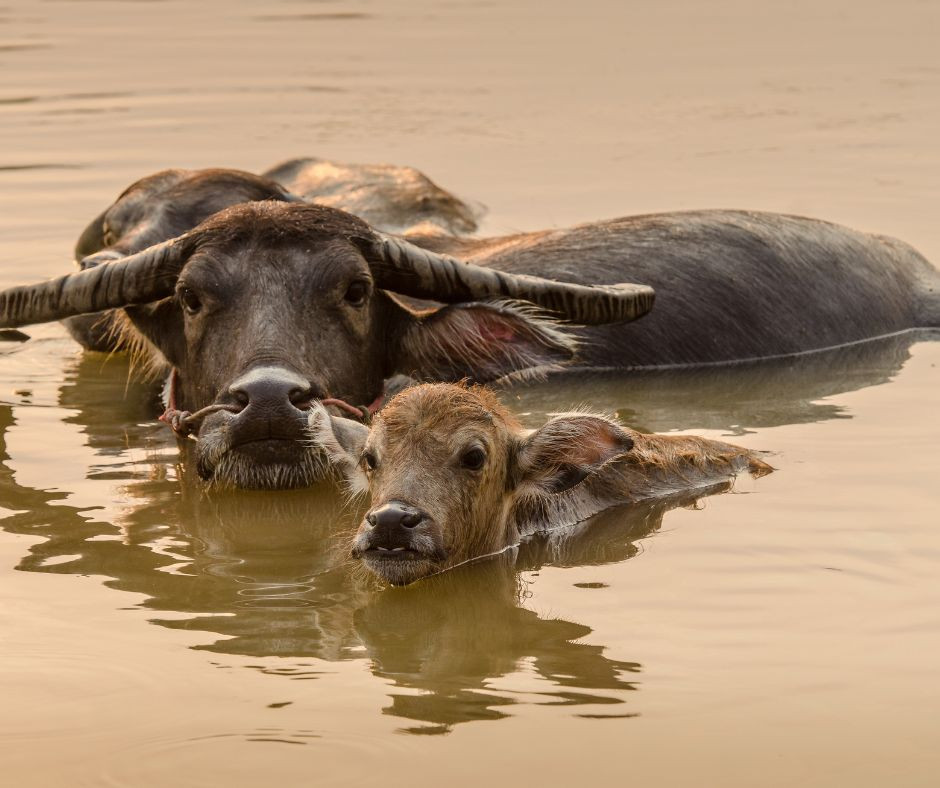- Finding Utopia Newsletter
- Posts
- The Languages & Dialects of the Philippines — A Kaleidoscope of Voices
The Languages & Dialects of the Philippines — A Kaleidoscope of Voices
Stories: The Languages & Dialects of the Philippines — A Kaleidoscope of Voices; The Philippine Carabao – Symbol of Strength, Culture & Sustainable Farming; Amanzoe, Greece – Luxury Resort Pick of the Week

Hello and Mabuhay!
Welcome to Finding Utopia — your trusted guide to exploring the wonders of the Philippines and beyond.
In this edition, we bring you inspiring stories and essential travel insights to fuel your next adventure:
The Languages & Dialects of the Philippines — A Kaleidoscope of Voices
The Philippine Carabao – Symbol of Strength, Culture & Sustainable Farming
Amanzoe, Greece – Luxury Resort Pick of the Week
Wherever you're dreaming of going next, we're here to guide you closer to your utopia.
Enjoy the read!
— The Finding Utopia Team
The Languages & Dialects of the Philippines — A Kaleidoscope of Voices

Did you know that the Philippines is home to over 120 to 175 distinct languages—and possibly more depending on how they're classified? Our latest blog, The Languages and Dialects of the Philippines, offers an immersive journey into the archipelago’s linguistic richness. It explores what it means for national identity, education, and cultural heritage.
A Celebration of Linguistic Diversity
The Philippines’ language tapestry is woven from its Austronesian roots, layered with Spanish, American, and indigenous influences. Estimates vary, with some sources reporting up to 175 living languages across the islands.
Filipino, derived from Tagalog, is the national language and serves as a lingua franca, connecting components of the country’s richly varied tongue communities. Meanwhile, English shares status as an official language, especially in government, education, and media. Notably, Filipino Sign Language is also recognized as the official language of communication with the Deaf community.
Regional Languages & Cultural Identity
Beyond the official languages, several regional tongues command millions of speakers:
Tagalog, Cebuano, Ilocano, and Hiligaynon each boast well over a million native speakers.
Other significant regional languages include Bikol, Waray, Kapampangan, Pangasinan, Maguindanao, Maranao, and Tausug.
These regional languages reflect not only communication tools but also deep roots in provincial life and identity.
Dialects & Linguistic Variation
In everyday conversation, many Filipinos refer to regional languages as “dialects,” but the reality is more complex. The term often masks vast linguistic differences—some rivaling those found between European languages.
Examples of commonly labeled "dialects" (but essentially distinct languages) include Tagalog, Cebuano, Ilocano, Hiligaynon, Bicolano, Waray, Kapampangan, and Pangasinan.
Why Language Matters
Each of the Philippines’ languages carries unique stories, ancestral knowledge, and cultural expressions. While Filipino helps knit the nation together, regional tongues provide pride, heritage, and identity at the local level. You might say that every language is a mosaic piece in the country's vibrant cultural portrait.
Curious about linguistic preservation, dialect differences, or how the national language continues to evolve? Visit the full blog for more depth:
Explore the full story:
The Philippine Carabao – Symbol of Strength, Culture & Sustainable Farming

In the heart of Philippine farmlands, one enduring icon quietly shapes the landscape—and the lives of rural communities—the carabao. Our latest blog post, The Philippine Carabao, celebrates this remarkable water buffalo, a living testament to Filipino resilience, heritage, and innovation.
More Than a Beast of Burden
Carabaos—also known as swamp-type water buffaloes (Bubalus bubalis kerabau)—are uniquely Filipino: compact, hardy, and steeped in tradition. Weighing 400–500 kg and standing around 1.3 meters tall, they are perfectly adapted to plow rice paddies and haul carts across muddy terrain.
Often called “Filipino farmers’ best buddy,” the carabao embodies qualities Filipinos deeply admire: perseverance, strength, and unwavering dedication. Though informally considered the national animal—thanks to the Philippine Carabao Act of 1992—official recognition remains pending.
Feeding Tradition—and Dessert
While carabaos are vital in farming, their contributions extend to the Filipino table. Carabao milk is richer in fat and protein than cow milk, making it the preferred base for beloved treats such as kesong puti (soft cheese), pastillas, and the creamy pudding tibok‑tibok. Its deep-rooted use dates back to the Spanish colonial era—a mark of agricultural and culinary heritage.
Science Meets Tradition: Two Buffalo Species Recognized
A groundbreaking study by UP Diliman researchers confirmed that the Philippine native carabao (swamp buffalo) and the imported riverine buffalo are genetically distinct species—not just breeds. The swamp types, smaller with unique chromosome numbers, remain unmatched for draft work. In contrast, the larger riverine variants are better suited for milk and meat production.
This distinction enables more focused breeding programs under the Philippine Carabao Center (PCC), designed to harness the strengths of each type for agricultural sustainability.
Guardians of the Herd: Conservation & Better Breeds
From a peak of around 3 million carabaos pre-war, numbers plummeted due to World War II devastations but recovery is underway. The PCC leads efforts to revitalize native stock through genetic improvement, crossbreeding, and creation of island sanctuaries to protect pure-bred carabaos.
Their mission goes beyond numbers—it's about preserving biodiversity, rural livelihoods, and cultural memory.
Why the Carabao Matters
Agricultural Icon: Irreplaceable in rice cultivation and rural transport
Cultural Symbol: Embodies Filipino ideals of hard work and perseverance
Sustainable Partner: Source of milk and meat supporting local economies
Conservation Focus: Modern science protects its legacy for future generations
The carabao remains more than an animal—it’s a living emblem of Filipino ingenuity, tradition, and resilience. As the country modernizes, ensuring its future means honoring the enduring bonds between the Filipino people and their steadfast partner in the fields.
Explore the full story—heritage, science, and sustainability:
Amanzoe, Greece – Luxury Resort Pick of the Week

Set atop the olive-draped hills of Porto Heli, Amanzoe stands as a serene sanctuary—a striking fusion of classical Greek design and contemporary luxury. In our latest Luxury Resort Pick of the Week, we dive into what makes Amanzoe a timeless retreat that balances architectural grandeur with relaxation, well-being, and Pan-Mediterranean charm.
A Resort That Echoes Antiquity
Amanzoe’s aesthetic is reminiscent of an Acropolis reborn for the modern era—its marble-clad pavilions and villas, adorned with Doric-inspired columns, blend seamlessly with the olive groves and hills of the Peloponnese. From this vantage, guests enjoy 360-degree views of the Aegean Sea and surrounding countryside.
The design journeys beyond aesthetics, honoring timeless materials like Sinai Pearl Antique and Guatemala Verde marble, paired with traditional dry-stone textures and warm timber pergolas—a blend of elegance and local heritage.
Private Pavilions & Villas with Panoramic Pools
Amanzoe offers 38 freestanding pavilions, each complete with its own garden, terrace, and private pool—ranging from 6‑meter to 12‑meter lengths depending on the pavilion type. For those craving maximum seclusion, beach pavilions offer direct access to the private shore, while expansive villas span multiple bedrooms and come with dedicated chefs and hosts.
A Sanctuary of Activity & Serenity
From culinary delights to holistic wellness, Amanzoe covers all bases. Enjoy Greek-Mediterranean fare highlighting daily-caught seafood and regional produce, or explore Japanese-inspired dining under the stars.
The Aman Spa dazzles with a light-filled, lavender-scented sanctuary offering holistic therapies, yoga, hammams, hydrotherapy, and Pilates. Facilities extend to a gym, tennis courts, and a nearby Beach Club featuring four sea-facing pools, cabanas, watersports gear, and casual dining.
Exclusive Experiences & Artistic Moments
Amanzoe recently unveiled new offerings for 2025, including a three-bedroom villa with a chef and host, as well as a “Building Mental Resilience” program created with tennis star Maria Sharapova. Guests can enjoy exercises, tennis, meditation, and spa treatments focused on wellness and mindfulness.
Art enthusiasts may be drawn to Villa 31’s James Turrell Skyspace installation. Its contemplative design—a chamber framing the sky above—provides a meditative space to observe shifting light and color.
Why Amanzoe Transcends Other Resorts
Architectural Majesty: A contemporary take on classical Greek grandeur
Privacy & Luxury: Pavilions and villas blend elegance with solitude
Wellness Integration: From spa rituals to tennis and meditation, wellness is woven into every experience
Artful Environments: Nature and design merge in spaces like Villa 31’s skyspace
Amanzoe is more than a place to stay—it’s a destination to feel deeply. Whether you're unwinding poolside, sampling Mediterranean cuisine, or reflecting under the Peloponnese sky, this resort redefines refined relaxation.
Discover the full experience in our latest feature:

Looking for unbiased, fact-based news? Join 1440 today.
Join over 4 million Americans who start their day with 1440 – your daily digest for unbiased, fact-centric news. From politics to sports, we cover it all by analyzing over 100 sources. Our concise, 5-minute read lands in your inbox each morning at no cost. Experience news without the noise; let 1440 help you make up your own mind. Sign up now and invite your friends and family to be part of the informed.





Reply